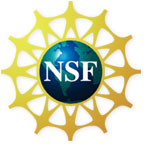EUV degree programs and courses
The interdisciplinary flavor of the EUV ERC the participating students to have the flexibility to design their course of studies. All three campuses offer the opportunity to realize a tailored study program with emphasis in Extreme Ultraviolet Science and Technology through certificate degree programs:
Certificate Programs
Applied
Physics Certificate Program, University of Colorado
This program enables physics Ph.D. students to take courses
in Engineering, Chemistry, Materials Science and Biology while
still pursuing a Ph.D. degree in Physics.
Certificate at Colorado State University
This program is open to graduate students in any of the STEM
disciplines who wish to acquire an expertise in EUV Science
and Technology
Degree Program
Applied
Science and Technology, University of California, Berkeley
This program focuses on studies involving the application of physical and
mathematical techniques to fundamental investigations and emerging areas within
the physical and life sciences. Major areas of emphasis are in applied physics,
engineering sciences, and mathematical sciences. This is primarily a PhD.
program.
Courses
To support the new educational programs , the EUV
ERC is offering courses addressing the foundations and applications
of optical and EUV science, including EUV source development,
optical system implementation, and measurement techniques.
These courses provide the pathway for integrating the latest
advances in EUV science and technology developed by the Center’s
researchers.
Courses presently offered are listed in the table below.
| Courses specific to EUV |
|||
| Course Title |
Institution |
Instructors |
Delivery Method |
| Soft x-ray and extreme ultraviolet science and technology |
AST
210 & EECS 213 (UC Berkeley) |
D. T. Attwood |
In class, Webcast-live, Archived for later viewing. Course Syllabus |
| ECE 681 (CSU) and PHYS 7810 (CU) |
H. C. Kapteyn, J.J. Rocca |
Webcast-live |
|
| Electron Beam Lithography and Nano-Fabrication Technology |
EECS 290 (UC Berkeley) |
E.H. Anderson J.A. Liddle |
In class lectures + laboratory Webcast of lectures possible |
| Synchrotron Radiation |
AST290S & EE290F (UC - Berkeley) |
Attwood | In class, Web cast-live, Archived for later viewing. www.coe.berkeley.edu/AST/srms |
| Nanostructure: Fundamentals & |
ECE 505 (CSU) |
C.S. Menoni, M Marconi |
In class Webcast possible |
| Optical Interfermetry and Laser Metrology |
ECE 506 (CSU) | M. Marconi | In class lectures |
| Plasma Physics and |
ECE 744 (CSU) |
Rocca |
In class |
| X-Ray Lasers | ECE 774 (CSU) |
Rocca |
In class/Web cast-live |
| Supporting Courses |
|||
| Experimental Optical Electronics | ECE 404 (CSU) |
Rocca |
Laboratory experiments |
| Optoelectronics | ECE 441 (CSU) | Rocca | In class lectures |
| Optical Properties |
ECE 574 | Menoni | In class lectures |
| Electromagnetics | ECE 341/342 (CSU) | Menoni, Marconi | In class lectures |
| DC circuit analysis | ECE 103 (CSU) | Marconi | In class lectures |
| Optics/Microscopy | PHYS 4510 (CU) |
Various Sakdinawat |
In class lectures |
| Optics Junior Lab | PHYS 3310 (CU) | Various | In class lectures |
| Ultra fast Optics | PHYS 7810 (CU) |
Various Bartels |
In class lectures and labs |
| Physical Optics | ECEN 5156 (CU) |
Bartels | In class lectures |
| Nonlinear optics | ECEN 6006 (CU) |
Various Bartels |
In class lectures |
| Fourier Optics | ECE 457 (CSU) | Bartels | In class lectures |
| Lasers | ECE 546 (CSU) |
Murnane, Kapteyn Rocca, Marconi |
In class lectures |
Light and Color for |
PHYS 1230 (CU) | Murnane | In class lectures |
| Physics Everyday Life | PHYS 1010 (CU) | Murnane | In class lectures |
| General Physics | PHYS 2020 (CU) | Kapteyn | In class lectures |





